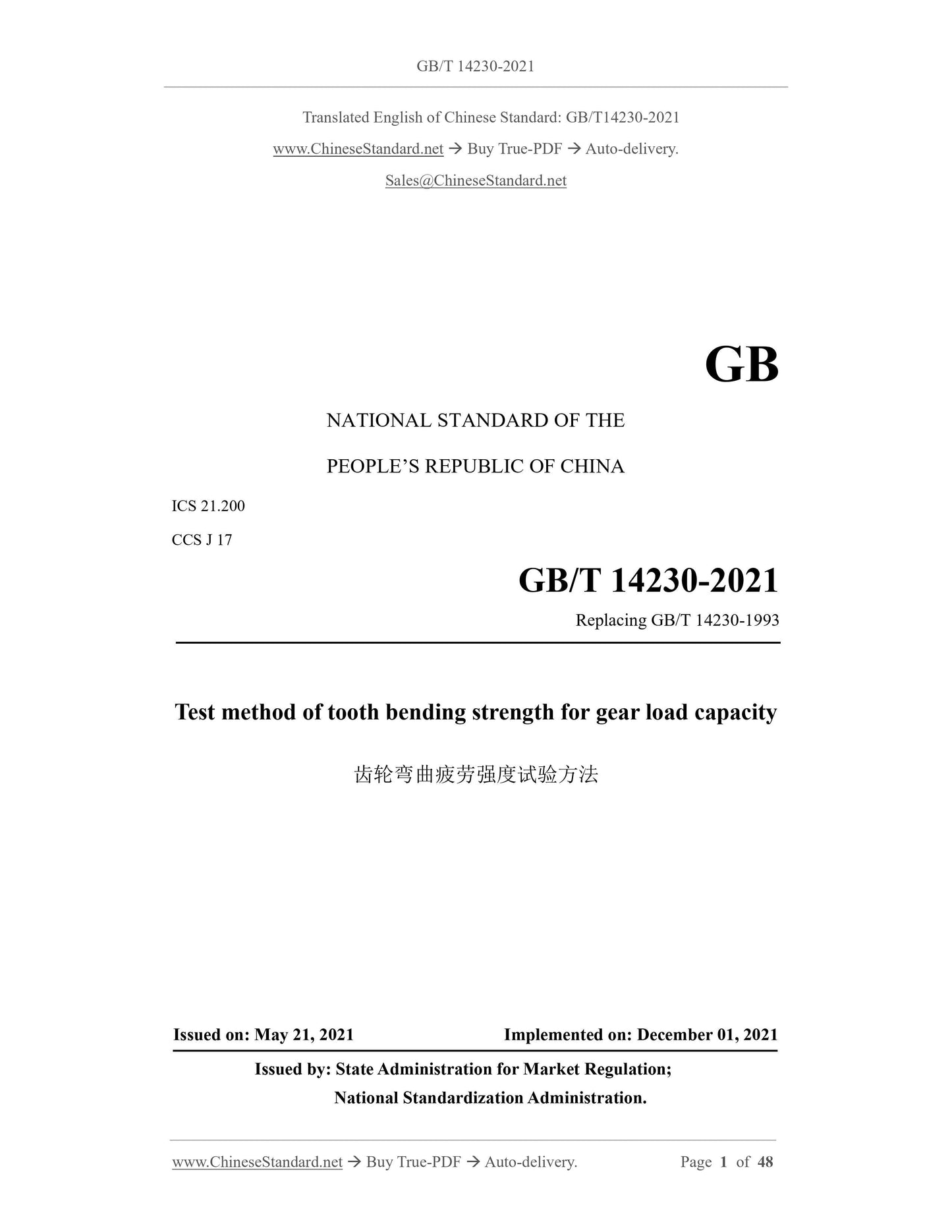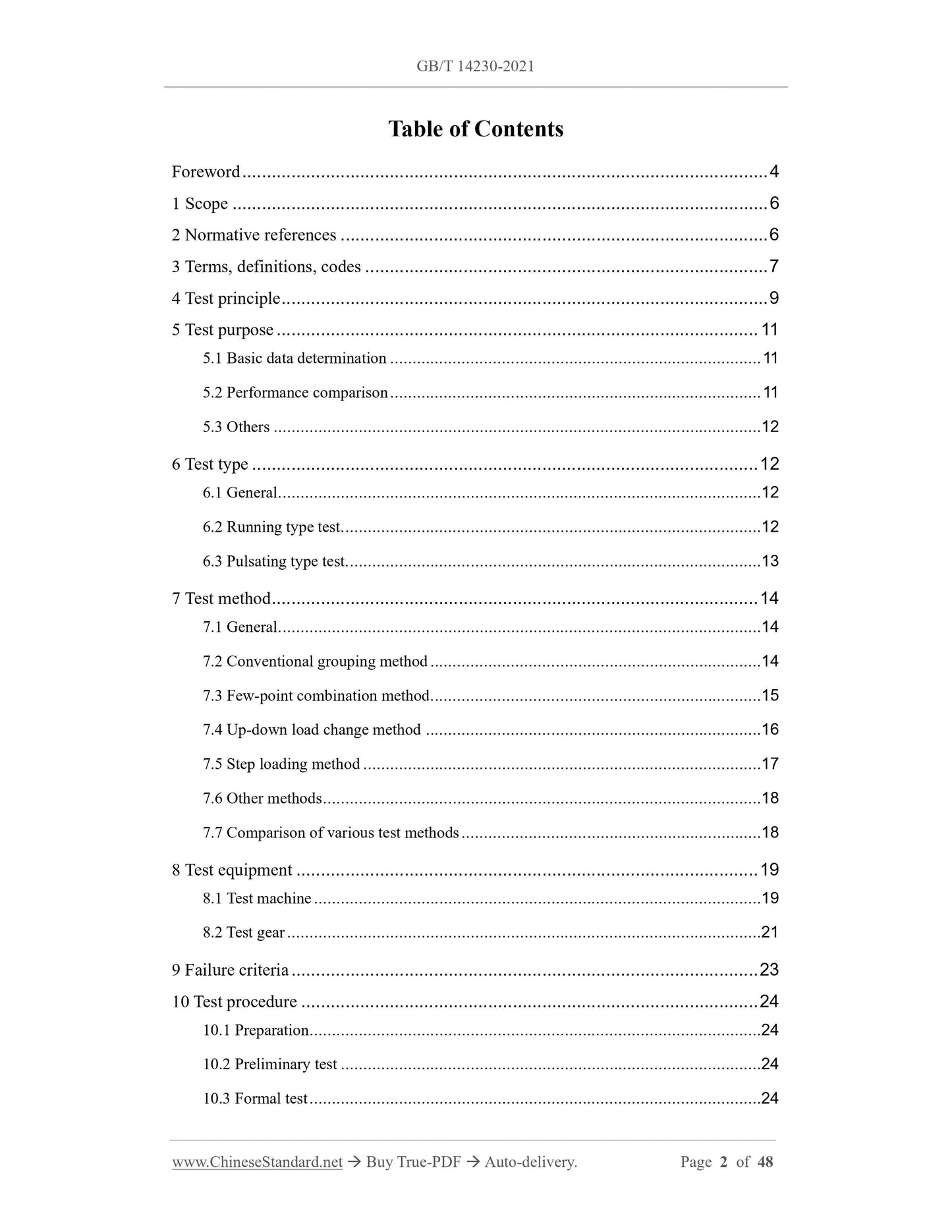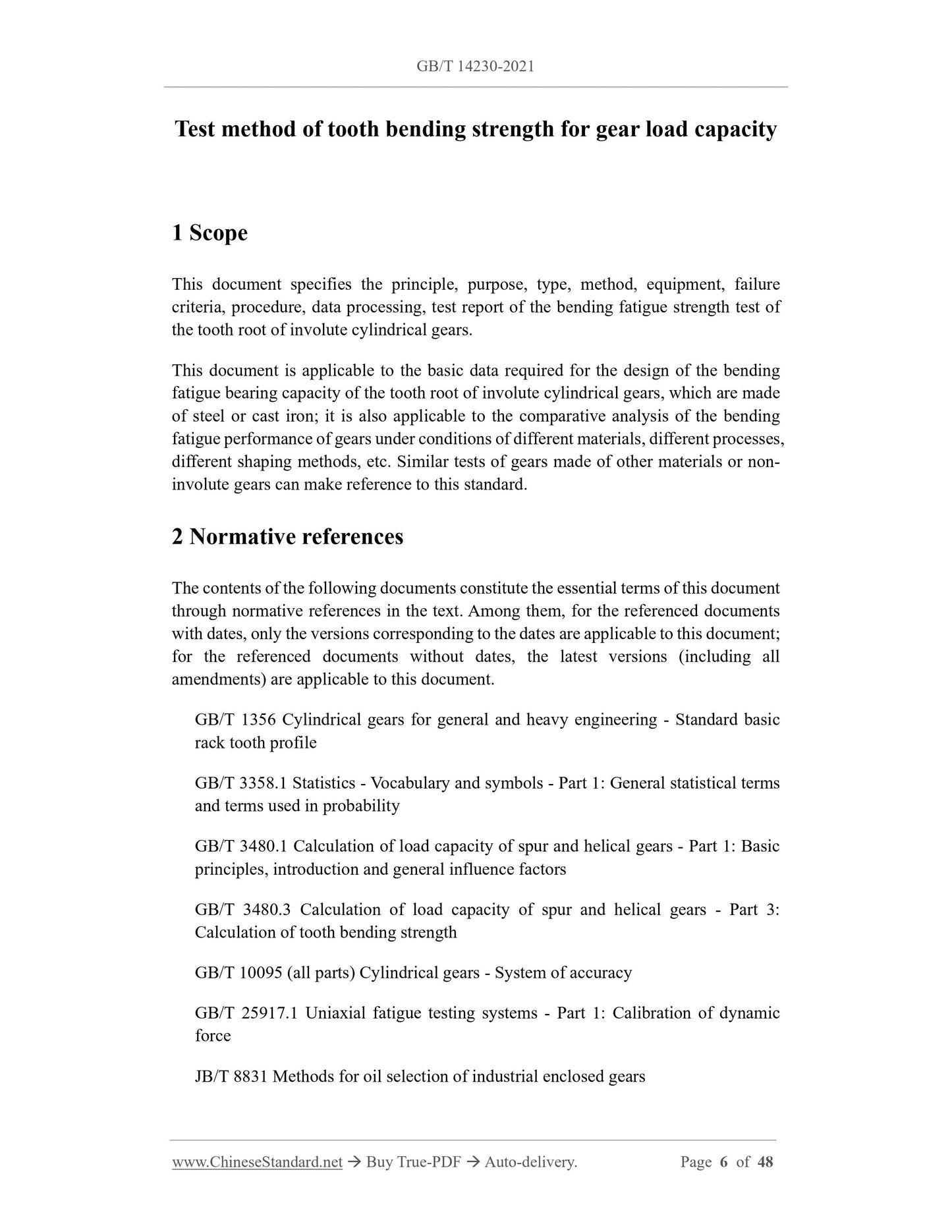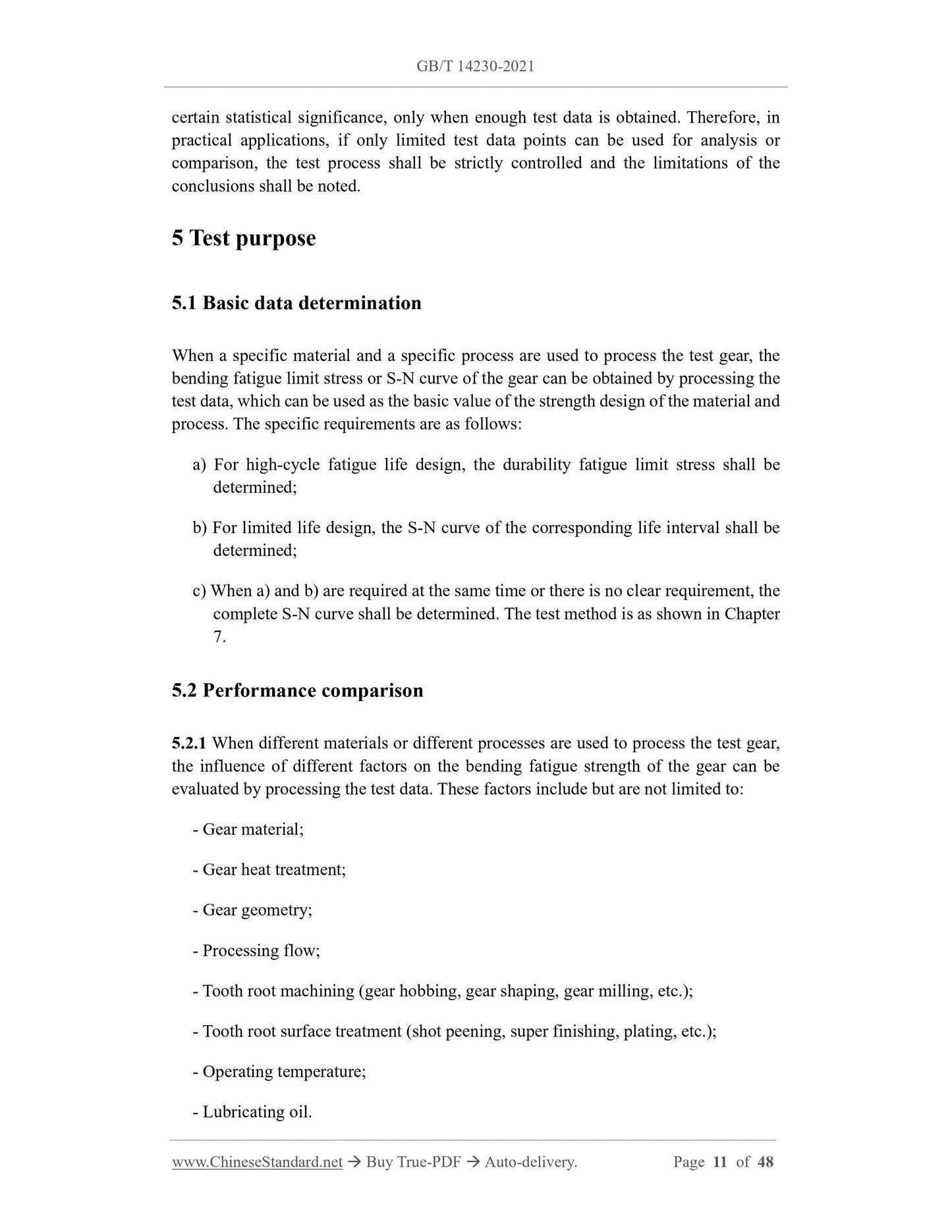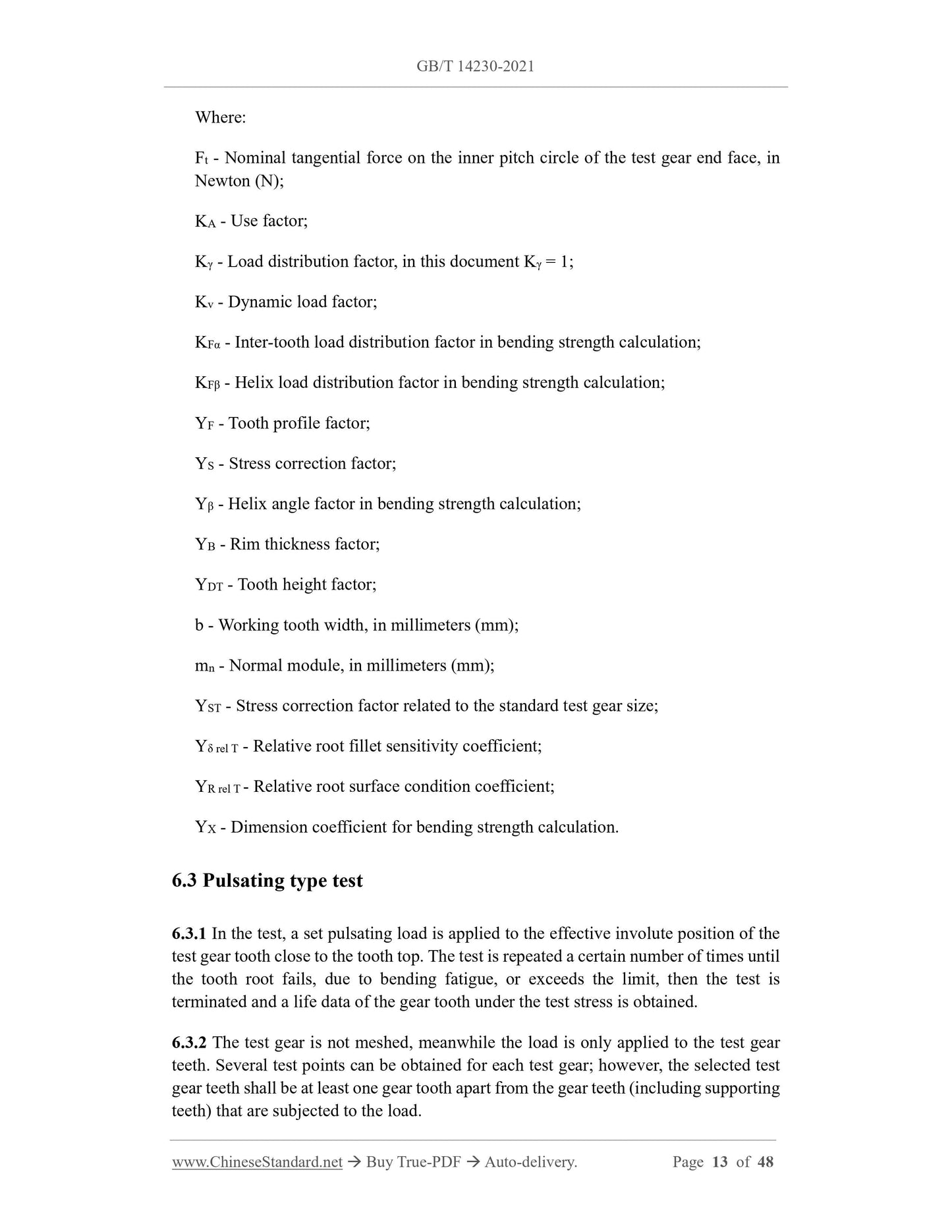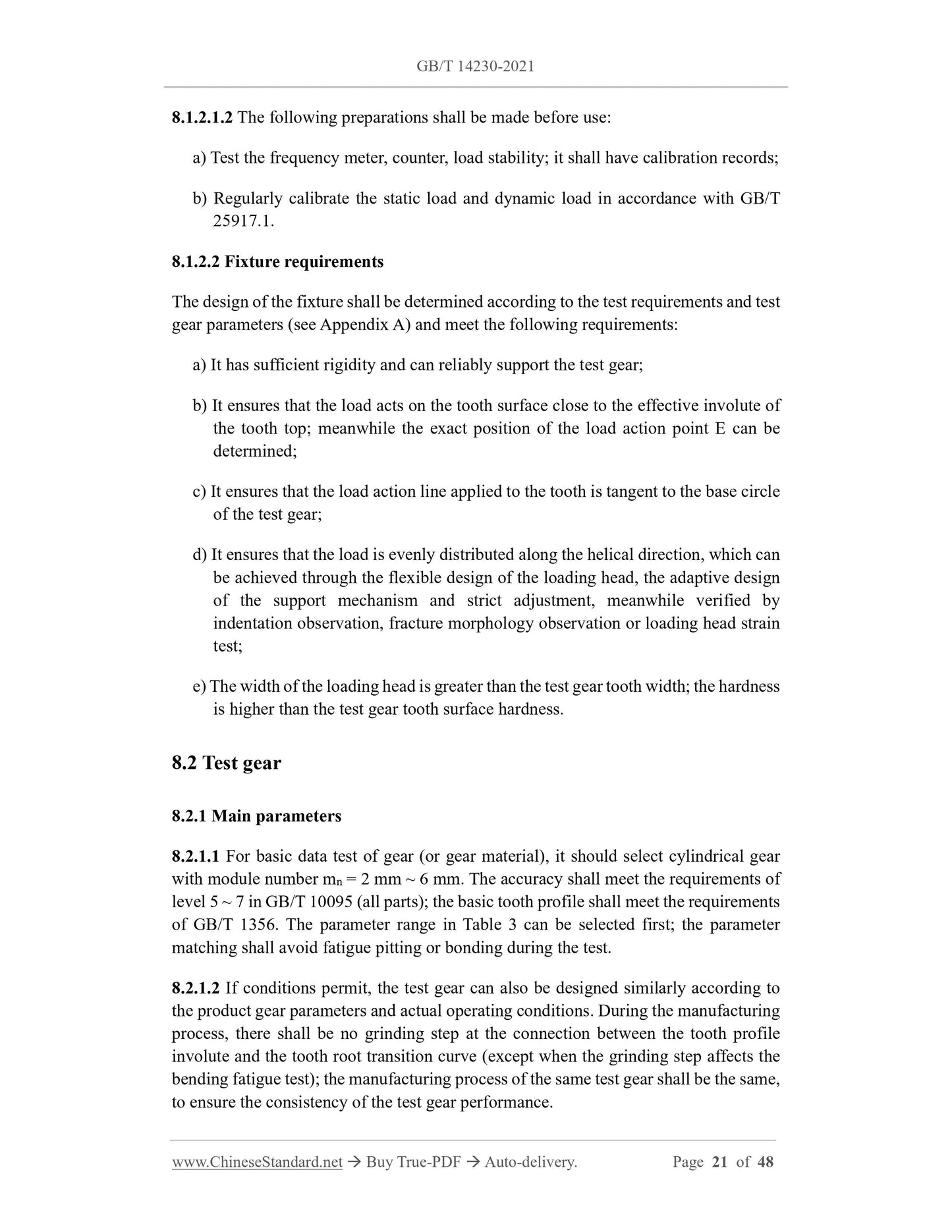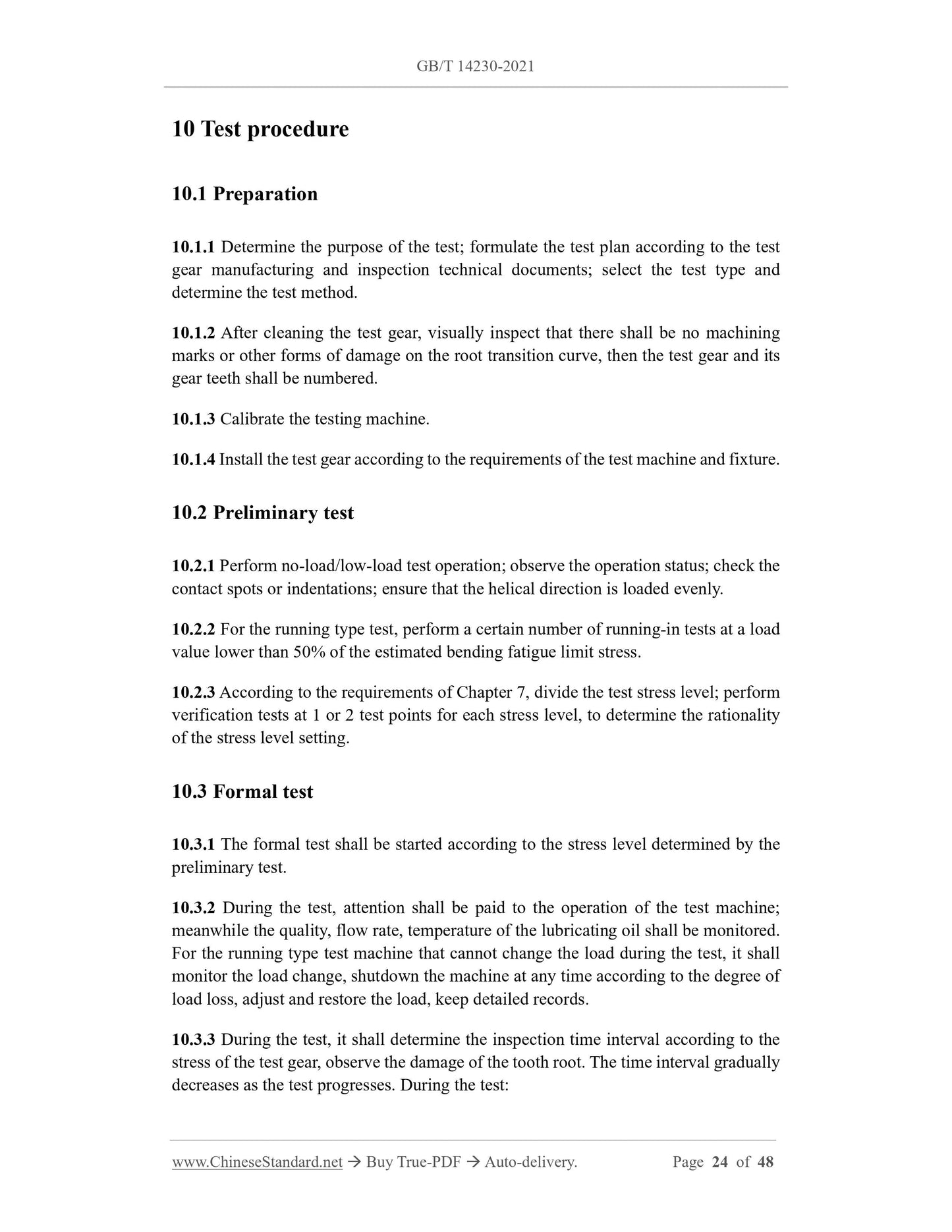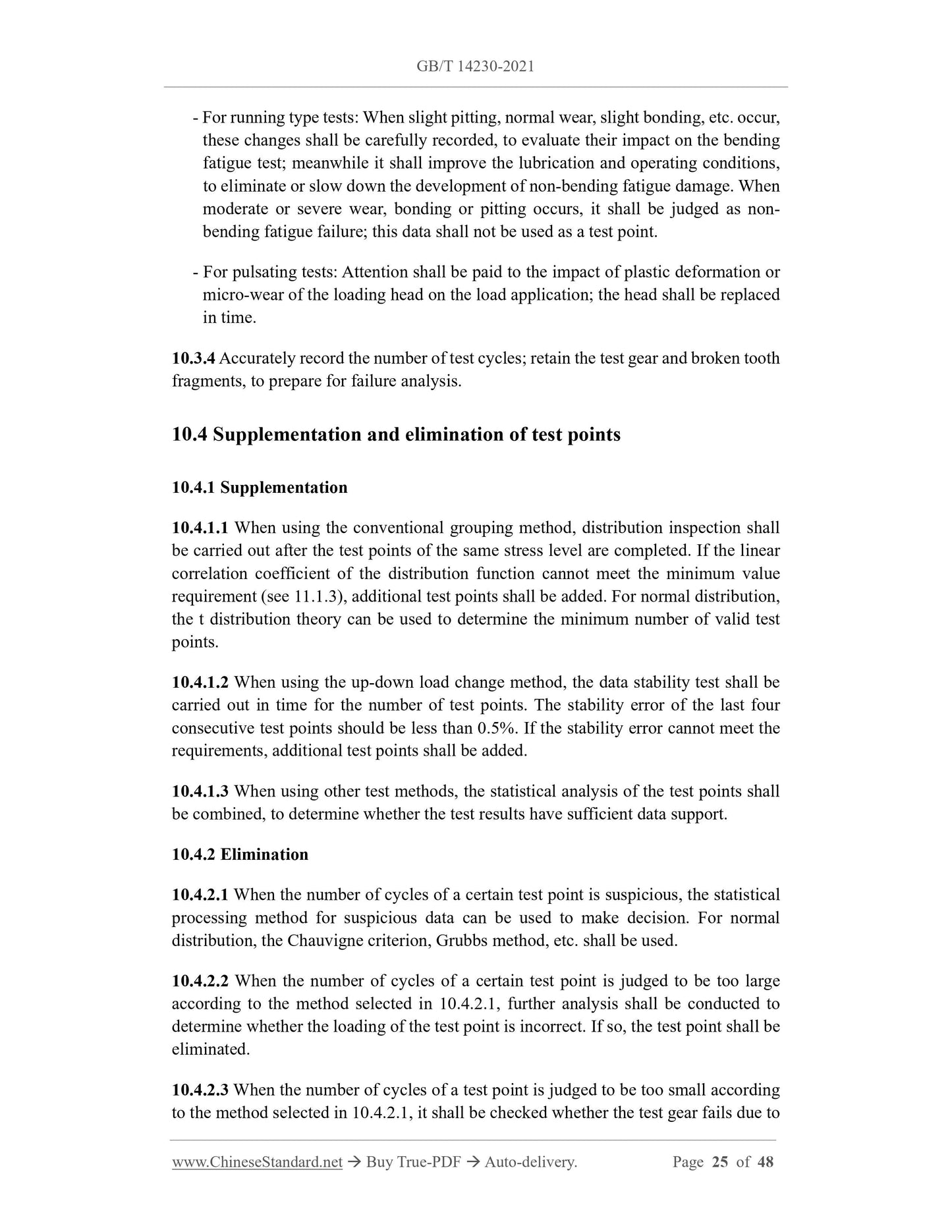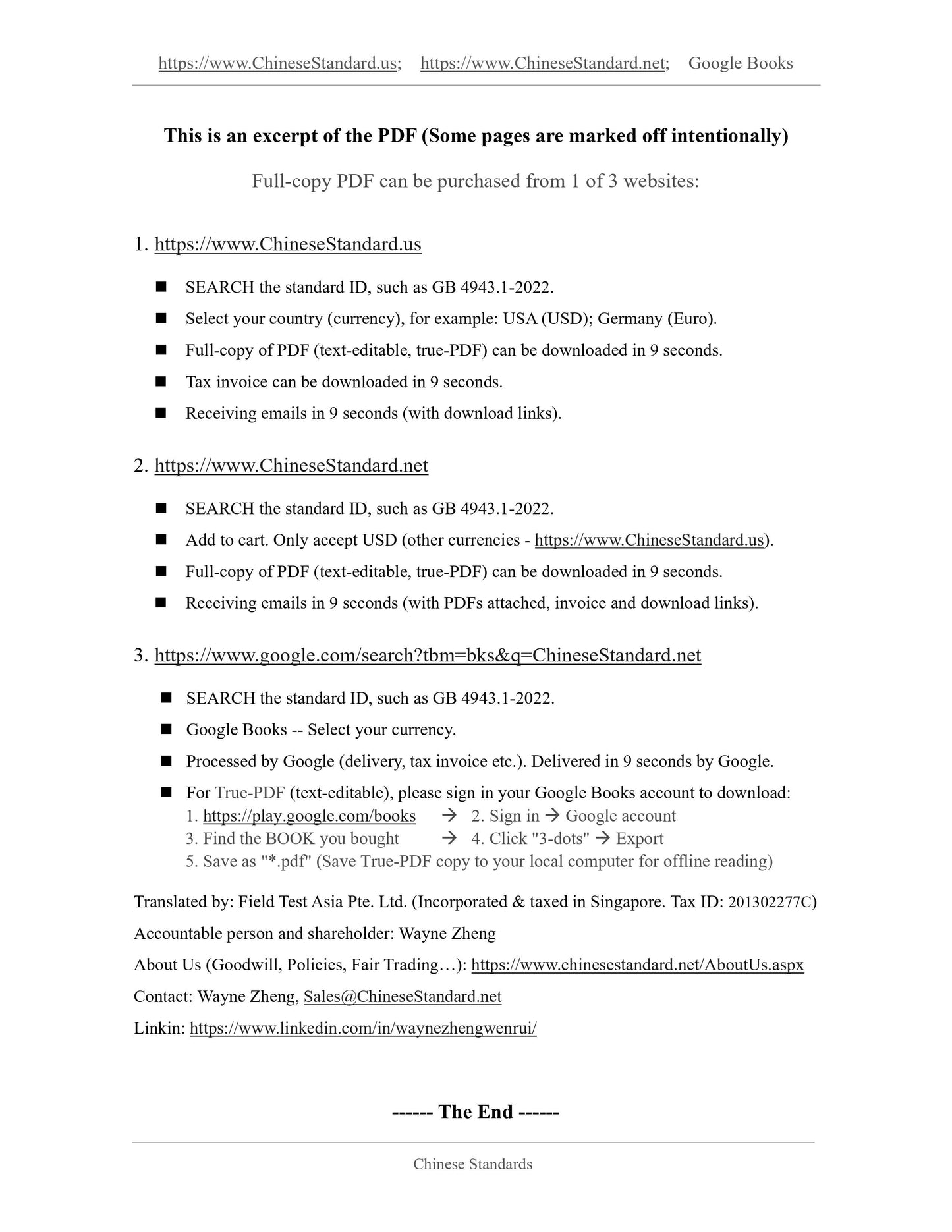1
/
of
9
www.ChineseStandard.us -- Field Test Asia Pte. Ltd.
GB/T 14230-2021 English PDF (GB/T14230-2021)
GB/T 14230-2021 English PDF (GB/T14230-2021)
Regular price
$565.00
Regular price
Sale price
$565.00
Unit price
/
per
Shipping calculated at checkout.
Couldn't load pickup availability
GB/T 14230-2021: Test method of tooth bending strength for gear load capacity
Delivery: 9 seconds. Download (and Email) true-PDF + Invoice.Get Quotation: Click GB/T 14230-2021 (Self-service in 1-minute)
Newer / historical versions: GB/T 14230-2021
Preview True-PDF
Scope
This document specifies the principle, purpose, type, method, equipment, failurecriteria, procedure, data processing, test report of the bending fatigue strength test of
the tooth root of involute cylindrical gears.
This document is applicable to the basic data required for the design of the bending
fatigue bearing capacity of the tooth root of involute cylindrical gears, which are made
of steel or cast iron; it is also applicable to the comparative analysis of the bending
fatigue performance of gears under conditions of different materials, different processes,
different shaping methods, etc. Similar tests of gears made of other materials or non-
involute gears can make reference to this standard.
Basic Data
| Standard ID | GB/T 14230-2021 (GB/T14230-2021) |
| Description (Translated English) | Test method of tooth bending strength for gear load capacity |
| Sector / Industry | National Standard (Recommended) |
| Classification of Chinese Standard | J17 |
| Word Count Estimation | 38,364 |
| Issuing agency(ies) | State Administration for Market Regulation, China National Standardization Administration |
Share
